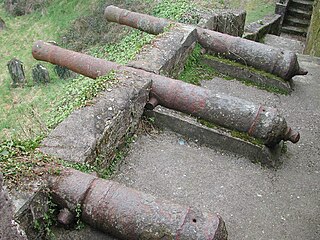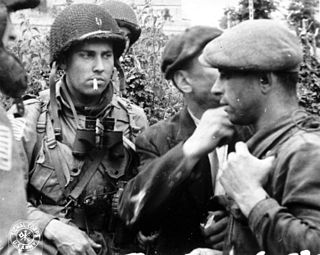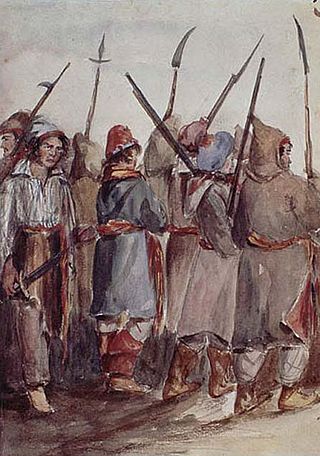In communications and information processing, code is a system of rules to convert information—such as a letter, word, sound, image, or gesture—into another form, sometimes shortened or secret, for communication through a communication channel or storage in a storage medium. An early example is an invention of language, which enabled a person, through speech, to communicate what they thought, saw, heard, or felt to others. But speech limits the range of communication to the distance a voice can carry and limits the audience to those present when the speech is uttered. The invention of writing, which converted spoken language into visual symbols, extended the range of communication across space and time.
In geography, regions, otherwise referred to as areas, zones, lands or territories, are portions of the Earth's surface that are broadly divided by physical characteristics, human impact characteristics, and the interaction of humanity and the environment. Geographic regions and sub-regions are mostly described by their imprecisely defined, and sometimes transitory boundaries, except in human geography, where jurisdiction areas such as national borders are defined in law. More confined or well bounded portions are called locations or places.
A coalition is formed when two or more people or groups temporarily work together to achieve a common goal. The term is most frequently used to denote a formation of power in political or economical spaces.

A regiment is a military unit. Its role and size varies markedly, depending on the country, service, or specialisation.

A brigade is a major tactical military formation that typically comprises three to six battalions plus supporting elements. It is roughly equivalent to an enlarged or reinforced regiment. Two or more brigades may constitute a division.
Colonel is a senior military officer rank used in many countries. It is also used in some police forces and paramilitary organizations.

Counterintelligence (counter-intelligence) or counterespionage (counter-espionage) is any activity aimed at protecting an agency's intelligence program from an opposition's intelligence service. It includes gathering information and conducting activities to prevent espionage, sabotage, assassinations or other intelligence activities conducted by, for, or on behalf of foreign powers, organizations or persons.

In military organizations, an artillery battery is a unit or multiple systems of artillery, mortar systems, rocket artillery, multiple rocket launchers, surface-to-surface missiles, ballistic missiles, cruise missiles, etc., so grouped to facilitate better battlefield communication and command and control, as well as to provide dispersion for its constituent gunnery crews and their systems. The term is also used in a naval context to describe groups of guns on warships.
An executive officer is a person who is principally responsible for leading all or part of an organization, although the exact nature of the role varies depending on the organization. In many militaries and police forces, an executive officer, or "XO", is the second-in-command, reporting to the commanding officer. The XO is typically responsible for the management of day-to-day activities, freeing the commander to concentrate on strategy and planning the unit's next move.
In military aviation, a wing is a unit of command. In most military aviation services, a wing is a relatively large formation of planes. In Commonwealth countries a wing usually comprises three squadrons, with several wings forming a group. Each squadron will contain around 20 planes.
This is a list of words, terms, concepts, and slogans that have been or are used by the German military. Ranks and translations of nicknames for vehicles are included. Also included are some general terms from the German language found frequently in military jargon. Some terms are from the general German cultural background, others are given to show a change that was made before or after the Nazi era. Some factories that were the primary producers of military equipment, especially tanks, are also given.

The Francs-tireurs et partisans français (FTPF), or commonly the Francs-tireurs et partisans (FTP), was an armed resistance organization created by leaders of the French Communist Party during World War II (1939–45). The communist party was neutral at first, following the Soviet Union's official view that the war was a struggle between imperialists, but changed to a policy of armed resistance against the German occupation of France after Germany invaded the Soviet Union in June 1941. Three groups were formed, consisting of party members, young communists and foreign workers. Early in 1942 they were merged to form the FTP, which undertook sabotage and assassinations of the occupation. The FTP became the best organized and most effective of the French Resistance groups. In March 1944, before the Allied forces returned to Normandy, the FTP was theoretically merged with the other Resistance groups. In practice, it retained its independence until the end of the war.

Irregular military is any non-standard military component that is distinct from a country's national armed forces. Being defined by exclusion, there is significant variance in what comes under the term. It can refer to the type of military organization, or to the type of tactics used. An irregular military organization is one which is not part of the regular army organization. Without standard military unit organization, various more general names are often used; such organizations may be called a troop, group, unit, column, band, or force. Irregulars are soldiers or warriors that are members of these organizations, or are members of special military units that employ irregular military tactics. This also applies to irregular infantry and irregular cavalry units.

The Israeli Military Intelligence, often abbreviated to Aman, is the central, overarching military intelligence body of the Israel Defense Forces. Aman was created in 1950, when the Intelligence Department was spun off from the IDF's General Staff. The Intelligence Department was composed largely of former members of the Haganah Intelligence Service. Aman is an independent service, and not part of the ground forces, Navy or the Air Force.

Military organization (AE) or military organisation (BE) is the structuring of the armed forces of a state so as to offer such military capability as a national defense policy may require. Formal military organization tends to use hierarchical forms.
During the Second Indochina War, better known as the Vietnam War, a distinctive land warfare strategy and organization was used by the National Liberation Front of South Vietnam (NLF) or better known as the Viet Cong (VC) in the West, and the People's Army of Vietnam (PAVN) or North Vietnamese Army (NVA) to defeat their American and South Vietnamese Army of the Republic of Vietnam (ARVN) opponents. These methods involved closely integrated political and military strategy – what was called dau tranh - literally "to struggle". The National Liberation Front, (NLF) was an umbrella of front groups, sympathizers and allies set up by the rulers of North Vietnam to conduct the insurgency in South Vietnam. The NLF also included fully armed formations- regional and local guerrillas, and the People's Liberation Armed Forces (PLAF). The PLAF was the "Main Force" – the Chu Luc or full-time soldiers of the NLF's military wing. Many histories lump both the NLF and the armed formations under the term "Viet Cong" or "VC" in common usage. Both were tightly interwoven and were in turn controlled by the North. Others consider the Viet Cong, or "VC" to primarily refer to the armed elements. The term PAVN, identifies regular troops of the North Vietnamese Army or NVA as they were commonly known by their Western opponents. Collectively, both forces- the southern armed wing and the regulars from the north were part of PAVN.
Swarming is a battlefield tactic designed to maximize target saturation, and thereby overwhelm or saturate the defences of the principal target or objective. Defenders can overcome attempts at swarming by launching counter-swarming measures that are designed to neutralize or otherwise repel such attacks.
A clandestine cell system is a method for organizing a group of people, such as resistance fighters, spies, mercenaries, organized crime members, or terrorists, to make it harder for police, military or other hostile groups to catch them. In a cell structure, each cell consists of a relatively small number of people, who know little to no information concerning organization assets beyond their cell. This limits the harm that can be done to the organization as a whole by any individual cell member defecting, being a mole, being surveilled, or giving up information after being apprehended and interrogated.

The 1959 to 1963 phase of the Vietnam War started after the North Vietnamese had made a firm decision to commit to a military intervention in the guerrilla war in the South Vietnam, a buildup phase began, between the 1959 North Vietnamese decision and the Gulf of Tonkin Incident, which led to a major US escalation of its involvement. Vietnamese communists saw this as a second phase of their revolution, the US now substituting for the French.

A squadron in an air force, or naval or army aviation service, is a unit comprising a number of military aircraft and their aircrews, usually of the same type, typically with 12 to 24 aircraft, sometimes divided into three or four flights, depending on aircraft type and air force.









